Bright Idea: Science Friday’s Sun Camp
The Sun Camp educational program features easy-to-do, hands-on STEAM activities for families and educators curious about Sun science.

The center of our solar system and our closest star, the Sun is so much more than a light bulb in the sky. It’s a dynamic system, constantly changing. Those changes affect us here on Earth in many ways, some obvious and some mysterious. But understanding the Sun and how it works may hold the key to discovering new living worlds in our Universe.
Download a one-page, printable Sun Camp Planner for your family or your group. We’ve also created a brief Educator’s Guide for those who want to plan formal or informal group experiences.
This program was originally held over five weeks in October and November of 2022.
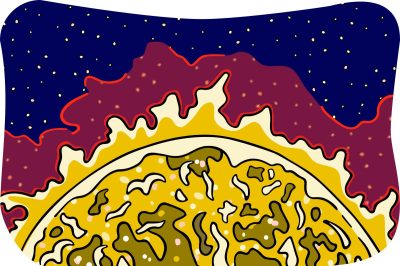 The Sun 101
The Sun 101Kick-off Sun Camp with The Sun 101. We ask, “What are the properties of the Sun and how do they affect its function?” Discover what the Sun is made of, how it makes energy, how it changes over time, and what the solar cycle is. You’ll learn all this and more.
Your project is a STEAM (Science, Technology, Engineering, Art, and Math) activity that explores the features of the Sun. We’ll get crafty as we use shaving cream and food coloring to make swirling models of the Sun. As we do, we’ll learn about sunspots, solar flares, and coronal mass eruptions. Check out the project now!
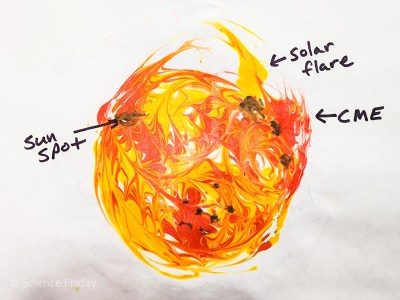
On October 19, we hosted a great guest for the Q&A. Professor Patricia H. Reiff, Associate Director for Outreach Programs, Rice Space Institute. Professor Reiff has been involved in space plasma physics research for more than forty-five years. She has served on public education projects for over 30 years, developing award-winning museum exhibits and planetarium shows at over 300 sites in 33 countries and 33 states. Wow!
Watch 10/19 Q&A! Make the project!
 The Solar System
The Solar SystemContinue Sun Camp with an exploration of The Solar System. We’ll try to answer the question: How does the Sun affect the planets of our solar system? You’ll learn how the solar system formed, what patterns the planets follow, and more.
You’ll explore the forces that keep our solar system moving. Become the Sun as you experiment with gravity, inertia, and centripetal forces. First, you’ll perform several simple activities to test different phenomena. Then, put your new knowledge to use as you take on our design challenges. Check out the project now!

The Q&A on October 26 featured special guests from the NASA Solar System Ambassadors program, a public engagement effort that works with motivated volunteers across the nation to communicate the science and excitement of NASA’s space exploration missions. Joining us are Amani Garvin an aerospace engineer, astrophysicist, and aspiring astronaut; Keonda Gaspard an educator, musician, filmmaker, and author of AfroAstronomy; and Davian Harry a physicist, data scientist, and systems engineer. Science Friday is really excited to host these three outstanding science communicators!
Watch 10/26 Q&A Try the project!
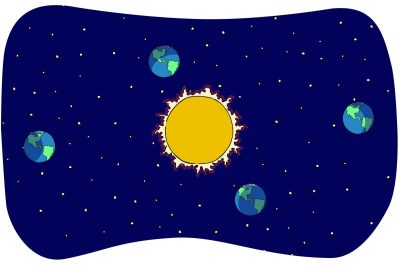 The Sun & Earth
The Sun & EarthContinue Sun Camp as you discover ways the Sun and Earth are connected. You’ll try to answer the question: Why is the Sun important to Earth? You’ll learn how light travels through space, understand how seasons change, why day turns to night, and learn about ways humans have watched the Sun for thousands of years.
Your projects are all about the Sun’s energy and how it affects the Earth. The Sun generates immense amounts of electromagnetic radiation. That heat and light travel to Earth to keep you warm, brighten your days, grow your food… and give you sunburn! So, you’ll experiment with different forms of light this week. In The Awesome Energy of the Sun, you’ll learn about the electromagnetic spectrum and test ultraviolet light. Then, in The Science of Sunlight and Shadows, you’ll discover how the Earth’s movement affects the movement of light on the planet. Try one or both. Let us know what you learn!
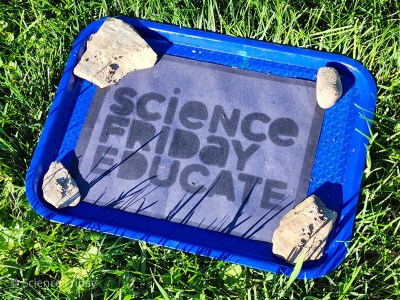
The Q&A on November 2 featured special guests from the NASA PUNCH (Polarimeter to UNify the Corona and Heliosphere) mission. In addition to studying solar winds, their Outreach Team shares Ancient & Modern Sun watching with learners. Dr. Cherilynn Morrow, Outreach Director for the NASA PUNCH mission, Joe Aragon Jr., Math and Science Educator and Cross-cultural consultant for PUNCH Native American Outreach and Dr. Nicki Viall, the NASA Project Scientist for the PUNCH mission.
Watch 11/2 Q&A Project: Shadows Project: Energy
 Solar Weather
Solar WeatherContinue Sun Camp as we learn about the weather in space. You’ll try to answer the question: How do the cycles of the Sun affect Earth? You’ll learn how sunspots, solar flares, CMEs, and solar winds, affect organisms and technology on Earth. Plus, you’ll discover how the Earth’s magnetic fields interact with solar weather to create beautiful auroras.
This week’s project explores the Sun’s solar winds and the Earth’s magnetosphere. The Sun’s solar wind stretches billions of miles to the edge of the solar system. The Earth’s magnetic field protects us from the radiation from the solar wind. The interaction between the two results in beautiful arouras, which we can see on Earth. Use common bar magnets to experiment with magnetic fields and test their strength. Try the experiments!

The Q&A on November 9 featured three great experts on space weather. Dr. Craig DeForest is the Principal Investigator for the NASA PUNCH Mission. Dr. Cristian Ferradas Alva, is a Research Scientist in the Geospace Physics Laboratory at NASA’s Goddard Space Flight Center where he studies the magnetosphere. Laura Brandt is the Project Manager for the Aurorasaurus, the first and only citizen science initiative that tracks auroras around the world via reports on our website and social media.
Watch 11/9 Q&A! Try the Project!
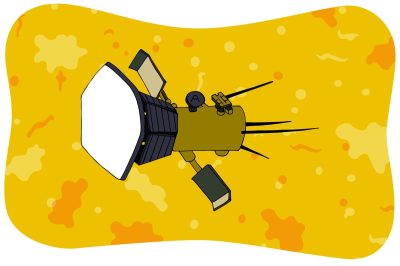 Beyond the Sun
Beyond the SunContinue Sun Camp as we explore beyond the Sun. You’ll try to answer the question: You’ll try to answer the question: How can our understanding of the Sun help us learn more about other stars, solar systems, and planets? You’ll learn about how our research on the Sun in our solar system teaches us about other places in the universe. Get your questions ready as we talk about galaxies, black holes, exoplanets, and the Goldilocks Zone.
Your project is an engineering challenge. You’ll learn about satellites and probes—what they do and how they are constructed. Then, you’ll work through the design process as you think of a problem you can solve and invent a space probe to solve it. Check out “Use Engineering To Design A Solar Space Probe” to learn more.
 The Q&A on November 16 features three great experts. Dr. Abigail Kopec is a Postdoctoral Research Fellow at the University of California, San Diego working in the RareLabs group studying elementary particles and dark matter. Dr. Michael L. Wong is a Postdoctoral Fellow at Carnegie Scienceʼs Earth & Planets Laboratory studying planetary atmospheres, habitability, biosignatures, and the emergence of life. Nadia Abuisnaineh is part of NASA’s Solar System Ambassadors program. With a degree in astrophysics and a passion for teaching, she works with a team of volunteers across the country who speak about NASA missions and space explorations.
The Q&A on November 16 features three great experts. Dr. Abigail Kopec is a Postdoctoral Research Fellow at the University of California, San Diego working in the RareLabs group studying elementary particles and dark matter. Dr. Michael L. Wong is a Postdoctoral Fellow at Carnegie Scienceʼs Earth & Planets Laboratory studying planetary atmospheres, habitability, biosignatures, and the emergence of life. Nadia Abuisnaineh is part of NASA’s Solar System Ambassadors program. With a degree in astrophysics and a passion for teaching, she works with a team of volunteers across the country who speak about NASA missions and space explorations.
Watch Q&A on 11/16! Try the Project!
This activity is supported by the NASA Heliophysics Activation Team (NASA HEAT), part of NASA’s Science Activation portfolio.
Sandy Roberts is Science Friday’s Education Program Manager, where she creates learning resources and experiences to advance STEM equity in all learning environments. Lately, she’s been playing with origami circuits and trying to perfect a gluten-free sourdough recipe.